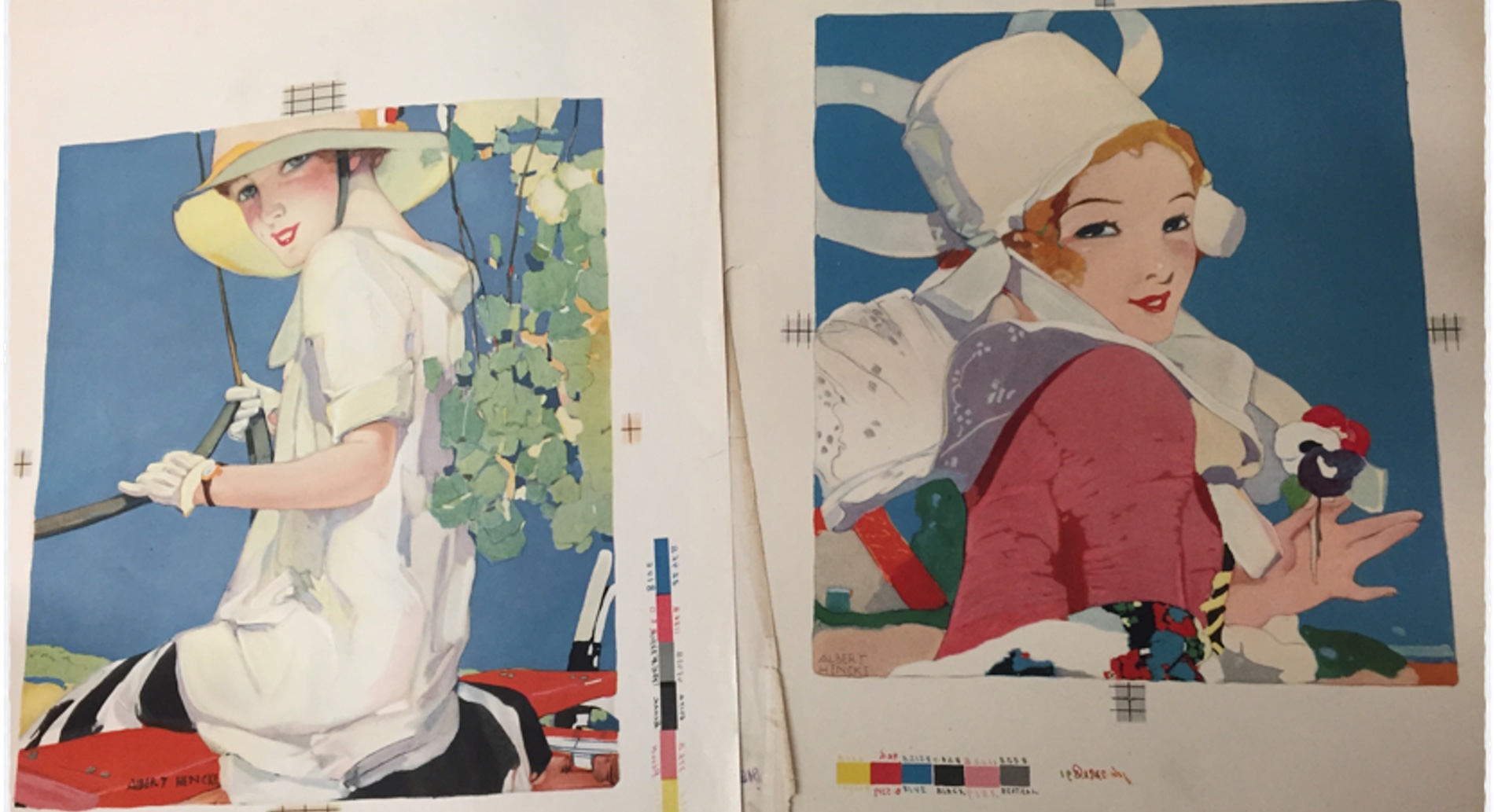
Digitizing the Tear Sheets in the Walt Reed Illustration Archive
Revealing Visual Culture was a grant-funded project awarded by the Council on Library & Information Resources (CLIR) foundation. The multi-year project created digital images and high-level metadata for 150,000 modern periodical illustration tear sheets contained in the Walt Reed Illustration Archive, a distinct collection held in the D. B. Dowd Modern Graphic History Library.
Since the project concluded in 2018, the digitized collection has been used heavily by patrons both inside and outside the Washington University community. Four years later, the digital materials still require further description and care and bring into question the future and longevity of digitized archival materials.

The Walt Reed Illustration Archive is a wealth of artifacts in terms of illustration history. The contents of this collection are varied in format and include magazine tear sheets, original paintings, drawings and sketches, magazines both bound and unbound, newspapers, books, photographic materials, scrapbooks, and proofs. The tear sheets, specifically, span over five decades and illuminate stylistic trends of commercial illustration, contain image depictions of cultural norms and stereotypes, and ultimately lend themselves to the study of everyday American society.
Because the magazine tear sheets were unprocessed when the grant was awarded, the items existed essentially as a “hidden collection” since they could not be easily discovered or served to patrons. In 2015, the tear sheets were still being stored in their original file cabinets in a loose organizational system that was established by the collector, Walt Reed. There was no real inventory of the tear sheets other than the labels provided by Reed on the exterior of the cabinets. The grant was the primary catalyst for not only getting these materials digitized but also properly housed and described for future use.


After the grant was awarded in 2015, the stipulation to digitize 150,000 individual magazine pages required outsourcing. This kicked off a large-scale inventory and packing process for the materials; many special collections staff pitched in and the endeavor was no small undertaking. This effort allowed for the grant project to officially kick off in January 2016 and conclude in 2018. During this period, the digitized assets were returned in batches and added to a public collection, which still resides freely accessible in JSTOR


It is important to note that a full-time position was not created for this project, which means the management and description work has been conducted by numerous student workers and staff over the years. The digital collection is so large that it sustained work-from-home projects during the pandemic and has employed numerous students. However, as of today, only 30,000 records contain fully descriptive data in the form of written image descriptions and subject or keyword tags. Enhancing the metadata for the assets is crucial for research and discovery and still remains a priority, but doesn’t always remain at the top of the list due to competing demands.
This collection also presents unique challenges in regard to data harvesting, creation, and management. The format of a tear sheet makes description difficult and time-consuming. Since a tear sheet is literally a page ripped out of a magazine, or a single one-off print or proof, and most often only contains an image, the text-based visual context of the description field relies solely on hand-written visual summaries. Within the past few years, the use of subject and/or keyword tags have recently been adopted as the primary mode of description because it allows for a more efficient way to boost image discovery but lacks the detail of written depictions.
Furthermore, there is often no publication information or date when looking at a single magazine page; the only data available is the artist’s name based on the folder it was placed in by the original collector. Even so, tear sheets were occasionally misfiled, resulting in incorrect data in the creator field and these inaccuracies have no way of being easily uncovered. There are also no reliable tools, such as OCR, for image-based materials because some contain no text at all.

These issues all impact decision-making for the future of the project. We are considering crowd-sourcing image tagging to produce more data for the collection, although it would take additional resources and skill. Even though this collection contains minimal data, the publicly available collection has been browsed heavily by patrons all over the world. It is also used regularly for promotion purposes, teaching, and scholarship. The level of discoverability it adds to the Walt Reed Illustration Archive remains unmatched, and for these reasons, we continue to work diligently to maintain the digital assets for many years to come.
This article was adapted from a presentation given at the Digitizing Hidden Collections Symposium’s Building Foundations for Discovery session in October 2022.
Andrea Degener is the visual materials processing archivist and supervisor at Washington University Libraries. Skye Lacerte is the curator of the D.B. Dowd Modern Graphic History Library.
